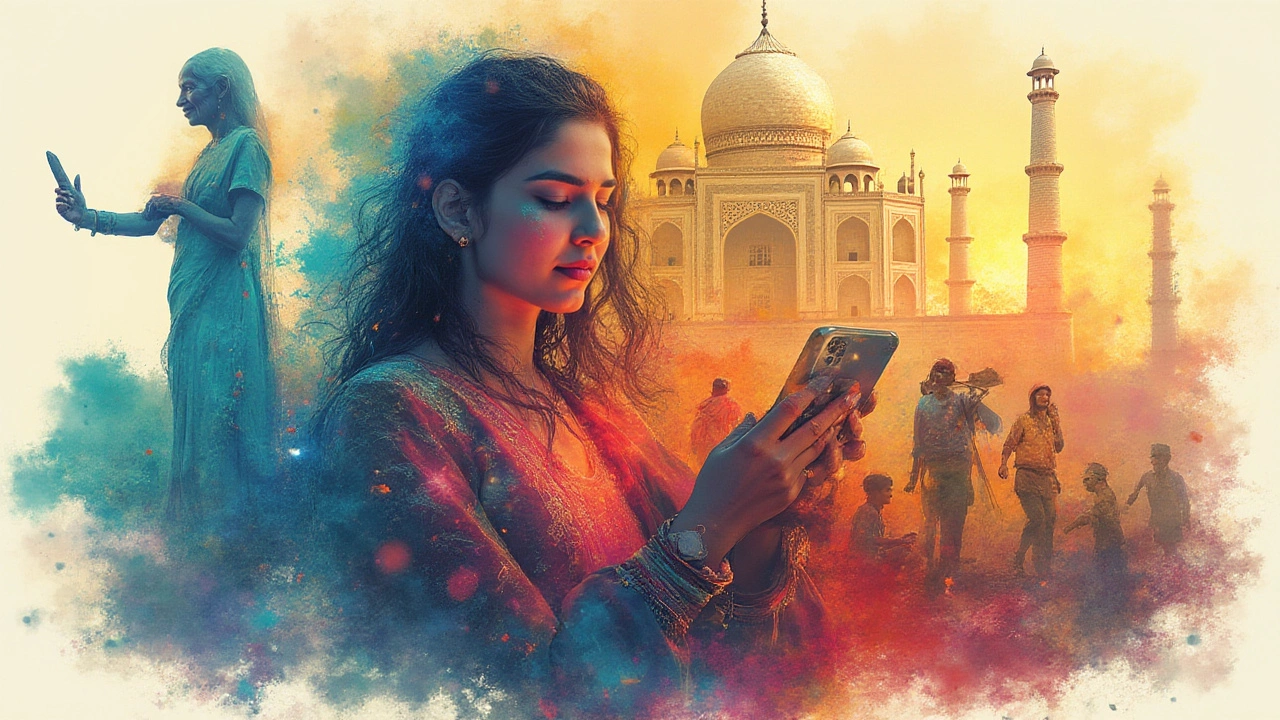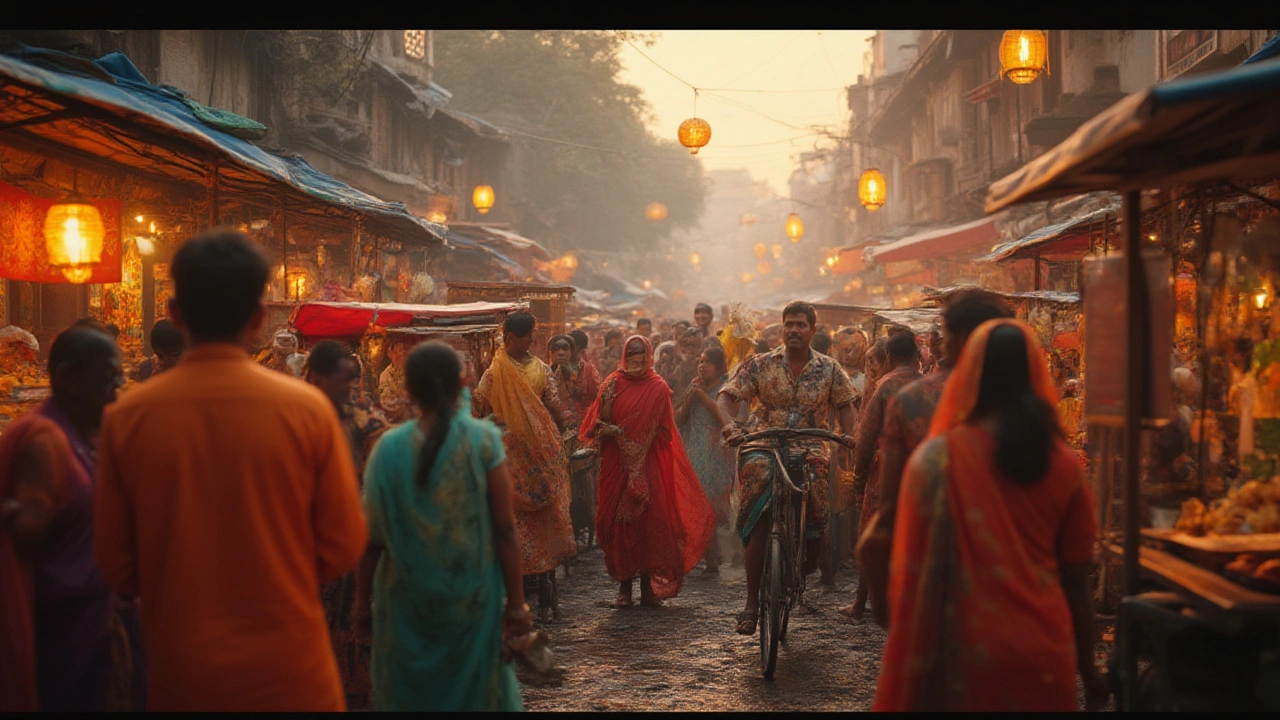If you try to squeeze everything about India into one sentence, you might end up with something like, "India is a dramatic knot of ancient traditions, booming technology, colorful festivals, and unstoppable energy tied together by the world’s biggest democracy." That line feels like cramming an overflowing Mumbai train into a single word—but it probably comes closest. This country isn’t just a place on the map. It’s a feeling that keeps changing whether you’re in a traffic jam in Delhi, chatting with your family after cricket in Chennai, or standing in a Toronto kitchen like me, missing your mom’s masala chai. But what’s the real story beneath all this color and chaos?
India: A Civilization Older than Time
Ask anyone even slightly interested in history about ancient civilizations, and India’s name pops right up next to Egypt, Greece, or Mesopotamia. What’s wild is the Indus Valley Civilization flourished around 2500 BCE. Archaeologists have unearthed scripts in Harappa that nobody has cracked yet. You get a hint of this ancientness everywhere: the Rigveda, thought to be one of the world’s oldest texts, still echoes in hymns today. If you’ve visited Varanasi, you might have seen people performing rituals on the same ghats their ancestors did thousands of years ago. And temples in Tamil Nadu? The Brihadeeswara Temple was completed in 1010 CE—before William the Conqueror set foot in England.
But old doesn’t mean stuck. India has a keen nose for mixing the archaic with the modern. A mother lighting a diya to ward off evil in Kolkata might have kids learning JavaScript upstairs. That paradox is everywhere—electric rickshaws zipping past 900-year-old mosques, a WhatsApp invite to a Holi bash, or politicians swearing on the Bhagavad Gita while live-Tweeting election updates. Now picture this: Sanskrit is the root of the word "zero"—which Indians invented, by the way. Without zero, half the world’s math would make your head spin.
If you’re hungry for quirky data, check this out:
| Fact | India |
|---|---|
| Languages Spoken | 22 official, over 19,500 dialects |
| Median Age | 28.4 years (2025) |
| Population | ~1.44 billion (2025) |
| Cinema Tickets Sold (2022) | 980 million |
| Tea Cups Drank Daily | Over a billion |
What really gets me is the way stories pass down through generations. In my own home, my grandmother’s tales of Partition sound almost legendary, but when you step onto Indian soil, you realize those stories aren’t just bedtime fodder—they form a curious link to a shared memory, from Punjab to Kerala. And that’s true whether the memory is about mangoes, math, or migration.
The Heartbeat of Diversity
Imagine landing in India, walking out of the airport, and suddenly your senses are hit by a carnival: dozens of languages swirling in the air, biryanis and dosas competing in roadside stalls, temples and mosques standing practically side by side. "Unity in Diversity" is more than a slogan on a dusty classroom wall—it’s daily reality in India. The country splits into 28 states and 8 union territories, each bursting with their own food, clothing, slang, jokes—and cricket teams. Andhra Pradesh’s spicy food is lightyears from Ladakh’s momos, and don’t even ask about the Delhi vs. Mumbai chaat war.
Religion feels like an everyday street festival. There are more than two million Hindu temples and around 300,000 active mosques. You’ll meet people who say Ganesh is their guiding deity, others who swear by Jesus, and some who simply touch their hearts to Sufi songs on late-night radio. For me, it all comes alive at Diwali, when every city glows brighter than Las Vegas, and people open their doors to neighbors regardless of what god they pray to—or even if they believe at all.
But diversity isn’t just about faith or food. Think of Bollywood’s glitzy dance numbers filmed in Rajasthan’s deserts and snowy Himachal towns—audiences from Assam to Tamil Nadu watch the same movie, then line up for samosas in different regional styles. Or consider sports. Hockey might be the national game, but mention cricket, and suddenly 1.4 billion people become experts in bowling tactics and team selection.
Language-wise, Indians are world champions at switching tongues. On my last visit, I saw a kid buy tea in Hindi, bargain in Tamil for a bus ticket, chat with a friend in Bengali, then apologize to a Canadian tourist in English–all in fifteen minutes. Even legal documents come in English or Hindi, and often local scripts too. That’s flexibility.
And here’s a fun bit: Indian weddings are like merging five Super Bowls, three Broadway shows, and a month-long music festival. The ceremonies, the food, the sheer number of relatives—it’s a logistical miracle. My cousin’s Chennai wedding had 2,000 guests. My wife Neha and I still joke that we haven’t recovered from all the dancing.

Technology, Growth, and Grit
If you’re visualizing India as a country only of charm and ancient traditions, think again. This is the place where Elon Musk’s Starlink competes for network coverage against street corner mobile shops. Nearly 860 million people use smartphones—almost everyone has instant access to the world in their pocket. India leapfrogged into tech like few other countries: digital payments in chai stalls, telehealth consults via WhatsApp, kids in rural Rajasthan attending coding camps over patchy WiFi. No kidding, UPI (Unified Payments Interface) clocked over 8.4 billion transactions in March 2025, making cash almost an artifact in big cities.
The space scene is nuts, too. The Indian Space Research Organisation (ISRO) launched the Chandrayaan-3 mission, making India the first nation to land near the moon’s south pole. Back in 2014, India sent a probe to Mars faster and cheaper than Hollywood could make the movie "Gravity"—a feat my sci-fi nerd friends in Toronto still can’t believe. Just last year, scientists from Bengaluru sequenced over 1 million genomes to help tackle rare diseases countrywide. That’s next-level innovation, often running on surprisingly lean budgets.
Don’t let the economic struggles fool you. India is tough. Slums and skyscrapers share the same skyline in Mumbai, and both contribute to a 'jugaad' spirit. Jugaad means genius improvisation—fixing a fridge with a shoe lace or building startups with next to nothing. It’s the reason Indian founders now lead massive companies like Microsoft and Google. Flipkart and Zomato are homegrown giants that make life easier for millions daily—and my mom now orders groceries online, which she once swore was impossible.
| Industry | Notable Achievement |
|---|---|
| Space | 1st country to reach Moon's south pole (2023) |
| IT Outsourcing | $250B revenue (2024) |
| Startups | Over 115 unicorns as of June 2025 |
| Renewable Energy | 4th largest solar capacity globally |
| Film | World’s biggest movie producer (2,200+ films a year) |
Day-to-day grit shows up everywhere: thousands of trains snake across the subcontinent, carrying over 23 million people daily, more than the population of Australia. During COVID, Indian-made vaccines reached African and Latin American countries before big pharma could even start. Talk about hustle.
Everyday Life: Where the Magic Is
So what’s it really like living, breathing, and eating in India—especially if you only get to visit during summer breaks from Toronto? The little stuff sticks with you. Street vendors yelling in a language you half remember, rickshaw drivers weaving through impossible traffic, someone offering you chai because it’s raining outside—hospitality runs in the bloodstream. Even in sprawling cities like Bangalore, neighbors become aunts and uncles. A simple “Namaste” opens doors, and food is more than fuel—it’s an invitation to share stories.
Food deserves its own anthem here, honestly. Every meal is a festival. In Amritsar, a steaming plate of chole bhature tastes nothing like a Mysore masala dosa, yet both bring people together. No restaurant chain can really match the chaos and laughter of a busy Indian kitchen; I’ve seen Neha’s relatives wage war over the best sambar recipe without anyone ever agreeing on a winner. Don’t forget about street food—pani puri in Mumbai can change your life, and I’d take a Kolkata puchka over a triple burger any day.
Daily life isn’t easy for everyone. Rural India still faces water shortages and blackouts; the monsoon brings both disaster and relief. But people adapt. Solar lanterns in off-grid villages, kids cycling miles to school, self-help groups teaching women to run businesses—these little victories get missed by big newspaper headlines. Data from 2025 shows literacy rates climbing fast, particularly among women. Kids in Ladakh and Kerala now learn coding alongside their regular classes, which is a massive shift from a generation ago.
Cultural festivals arrive nonstop: Onam in Kerala, Durga Puja in Bengal, Eid in Hyderabad, Christmas in Goa. Each festival is both private and wildly public. You could spend an entire year chasing after festivals and never run out. If you ever need a reason to travel, time your trip with Holi and experience colors and chaos like nowhere else.
And of course, there’s cricket. An Indian will drop everything to follow an India-Pakistan match, and even those who don’t care much transform into pundits on game day. It’s not just about sport—it’s about pride, rivalry, and sometimes, a sense of unity that makes every Indian, no matter where they live, pause and cheer together. I’ve seen uncles in Toronto’s rain-soaked parks replaying the World Cup, cursing bad umpire calls as if they were still in Chennai or Mumbai.
If you ever try to wrap your head around India in just one sentence, whisper it under your breath as you watch the sun set on the Ganges, hear Bollywood music playing from a Toronto cab, or see a kid ace a math contest in a tiny Indian town. "India is too vast for one sentence, but it’s the only country where yesterday’s gods, today’s tech, tomorrow’s dreams, and billions of stories all sit together at the same dinner table."
